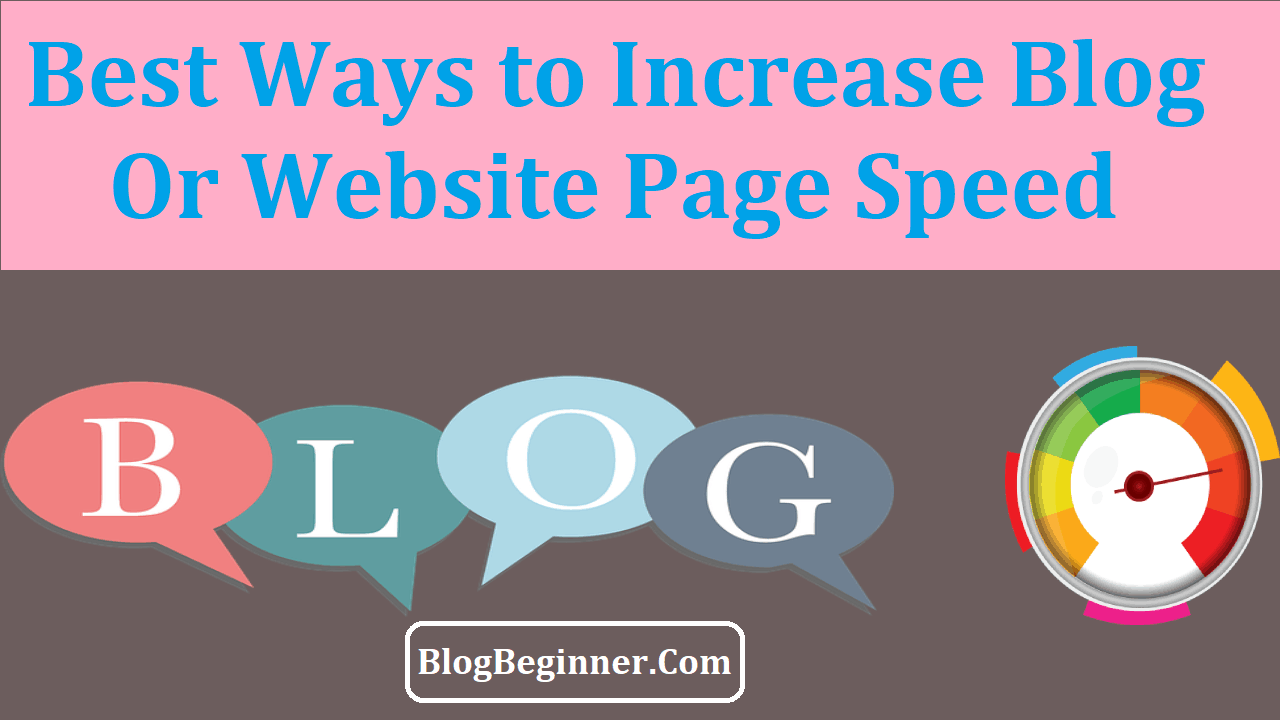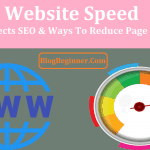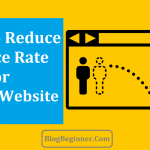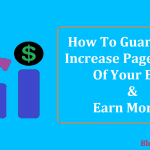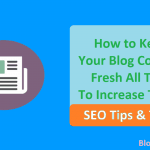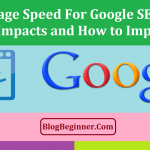If you own a WordPress blog, it is important to learn how to make your website load fast.
A lot of people don’t see any problems – as long as their site loads in a matter of seconds.
There’s really no need to speed up your website if this is the case in the real world!
Truth is, if you think that most of your site visitors are not strapped for time, then you are wrong!
This is because your site’s loading speed has an impact on everything – traffic, user satisfaction, bounce rate, and conversions.
In turn, these factors determine your site’s profitability.
To help you better appreciate the speed factor, here are some stats that may convince you:
- From 2000 to 2016, the average attention span of humans decreased from 12 to 8 seconds. That is even shorter today. Gone are the days when users would be willing to wait until your page loads completely.
- Almost 80% of buyers who are not satisfied with the website’s performance will not return. Why would they when it would be a waste of time? Would you?
- 47% of users expect web pages to load in no more than 2 seconds. That’s how impatient a lot of online users are at present. After all, with the stiff competition between similar websites today, it is easier to find a fast-loading website than wait for your page to load.
- About 40% of visitors abandon websites that take over 3 seconds to load. You may think that is unreasonable. But, that is a fact.
- A delay of 1 second lowers conversion rate by as much as 7%, 11% for page views, and 16% for customer satisfaction. Imagine how this can affect your site’s profitability.
Any WordPress website will slow down over time.
Thus, it is important to check it on a regular basis.
This is because your site will accumulate data, and become more complex.
This will make it less efficient.
While this is nothing out of the ordinary, you can do something about it.
Here are 10 smart ways you can use to speed up your WordPress blog loading time:
Contents In Page
1. Invest in a high quality hosting service.
Finding a good host for your website goes a long way in improving its performance.
There’s no question you can find a lot of cheap services online.
But, remember that in buying hosting services, you always get what you spend for.
Thus, when building a website, hosting is not one of those areas where you can cut corners.
After all, you are aware that speed matters – and speed may cost money!
Whenever possible, never opt for shared hosting.
This way, you can avoid the risk of sharing the server with undesirable “neighbors” who can cause your site to slow down.
But, a dedicated server may also not be the right option for you, especially if you don’t have the budget for a sizeable manpower and huge site.
Having said that, your best option may be a VPS.
This is a type of hosting service that offers the ideal balance of speed, cost, and comfort.
It is fast enough, but doesn’t take a heavy toll on your pocket.
A managed WordPress hosting is another good option.
This allows your website to run on a server that is optimized specifically for WordPress.
This means you no longer have to worry about the technical stuff that comes with running a website.
You also enjoy the benefit of lower cost since the current rates for managed hosting are going down.
2. Always use the latest WordPress versions available.
Remember that every version of CMS comes with bug fixes and new features, among others.
These help your site run better and in a more efficient manner.
These fixes may also keep your site from loading too slowly.
But, if it’s not compatible with the software installed on your server, it may also be incompatible with WordPress.
Having an up to date website not only addresses speed issues.
It also helps with security concerns.
By having the newest WordPress version, as well as its plugins and themes, you have the assurance that all known vulnerabilities have been addressed.
3. Use an appropriate theme.
The theme you are using has a bearing on your website’s speed.
There are themes that are only packed with unnecessary trimmings.
They come with lots of features that only tend to slow your site down because of sheer weight.
Remember that all features are made of codes that your website needs to load.
To avoid loading time issues, find a theme that only has what you need – plus nothing else.
If that is not possible, go for a lightweight theme, then add the functionalities you need through plugins.
This way, you can maintain a lightweight and lean website that will be great for your loading time.
4. Make sure your web technology is updated.
It is important to always keep your core technology updated.
This is a no-brainer.
New versions of web technologies like HTML and PHP come out on a regular basis.
This is not by chance.
These new versions contain new features and improvements that often help improve speed.
If only for this reason, you should always update your technology.
While a good host often takes care of this issue, it is a good idea that you also check on your own.
For example, when you login to your hosing backend, find time to check for the PHP configuration.
This way, you gain control of the PHP version you’re using.
A word of caution, though.
Whenever you update to the latest version of a program like PHP, make sure you can restore the previous version when something goes wrong.
This is because compatibility issues may happen. You can avoid bigger problems this way.
5. Perform database maintenance on a regular basis.
Similar to the WordPress core, your database also becomes inefficient over time.
It accumulates temporary disk space as well as unused data from post revisions, uninstalled plugins, and other similar activities.
These all add up, and the result is a slower-loading website.
It is therefore important to maintain your database regularly to keep it usable and lean.
You can find a lot of tools online that can help.
These include WP-Optimize that is easy to use.
Another option is WP-Sweep.
It is also a good practice to limit the amount of post revisions you apply.
6. Put a monitoring system in place.
The best way to manage your website loading time is to monitor it.
After all, as they say, you can only measure what you manage. This means you can take corrective actions fast – if you know that a problem exists.
You can find many online tools that provide automatic monitoring.
These include tools that help measure your site’s speed such as Pingdom.
Here’s how it works.
Once you register, they will start monitoring your site’s loading time.
Once it slows down, they will inform you via email.
The service may cost some money, but it will be worth every penny you spend for it.
7. Reduce the number of your server requests.
Server requests happen each time your browser asks for a resource from the server.
This includes images, style sheet files, or scripts.
The more service requests made, the longer it would take to load your site completely.
This is why you need to keep server requests to a minimum.
Following are some tips you can follow to limit your server requests:
- Limit the number of posts you show on each page. – Just show the post excerpts. Avoid making full posts on archive pages.
- Break up long posts into pages. – This is very easy to do. If a post has lots of comments, split them into several pages.
- Minimize the images as well as other elements you include in your pages.
- Uninstall plugins that you don’t need; in particular, the slow ones.
- Deactivate plugins that you seldom use, or those that you don’t use on a regular basis.
- Enable lazy loading mode. This will delay loading the images until they’re visible on the webpage.
- Limit external resources like fonts if they’re not really necessary. – Tools like Pingdom and GTmetrix can provide you with details of your server requests, as well as the amount of time it will take to complete. Then, you can apply measures that will either get rid of requests or ensure their completion in the shortest amount of time possible.
8. Optimize your images.
In most cases, images eat up a big part of a page.
That is understandable because they need a bigger space than CSS or text.
Thus, to help speed up WordPress, it is important that you know how to make your images smaller without compromising quality.
This is known as compression.
The best approach is to compress the images before loading them.
When you use Photoshop, for example, you have the option to save the file for the web.
If you are using other image editing tools, you can try TinyPNG, if your tool doesn’t offer compression.
TinyPNG can do the job for you.
If you prefer an automated process, you can opt for image optimization plugins such as EWWW Image Optimization and Smush.
These plugins will instantly compress the images you upload to your website.
When using images for your page content, bear in mind that WordPress recreates them in different sizes.
This will allow you to input the image size that you want to appear on your page.
If you post a full-sized image, then shrink it to 300 pixels, you can expect a slow website as a result.
The sad truth is that it happens over and over again.
9. Refrain from hosting video files on your website.
When talking about media, a major concern are videos.
There is no question that WordPress can host and play videos.
But, doing so may not be a sound idea.
For one, videos can eat up a lot of bandwidth.
This is crucial if your hosting account only has a limited allocation.
Also, videos will jack up your WordPress site’s size by a significant amount.
This will make it more difficult to back up.
Why insist on loading videos on your site when you can find ultra-fast video hosting websites that can do a better job than your server?
Using auto embeds is a lot more convenient option.
All you need to do to add videos into your page is copy the links from Vimeo, YouTube, or DailyMotion, then paste them in the WordPress editor.
10. Make use of caching.
As mentioned earlier, WordPress comes up with an HTML version of your page each time a user asks to view it.
It is obvious that it is one of the reasons your WordPress blog takes forever to load.
Now, wouldn’t it be logical if there is a finished HTML page available anytime?
This way, you can save a number of steps.
This is what caching is for. In fact, experts agree that it is among the most effective ways to reduce your WordPress site’s loading time.
The CMS likewise provides you with a number of plugin solutions that will enable cashing.
These include W3 Total Cache, WP Rocket, and WP Super Cache. WP Rocket is a premium option.
If you’re tech-savvy, you can perform caching on your own through htaccess.
You can also make use of server caching. But, this may require you to discuss the matter with your host.
Today, a lot of managed WordPress hosting service providers also offer caching solutions. This way, you don’t have to do anything else.
Final Word:
All WordPress websites will slow down in time because of different factors like data accumulation and updates that will make the site more complex.
But, you can improve your WordPress blog loading time with the help of the smart tips provided in this post.
This way, you can retain your site traffic, user satisfaction, and conversion rates – and ultimately, your profitability.
